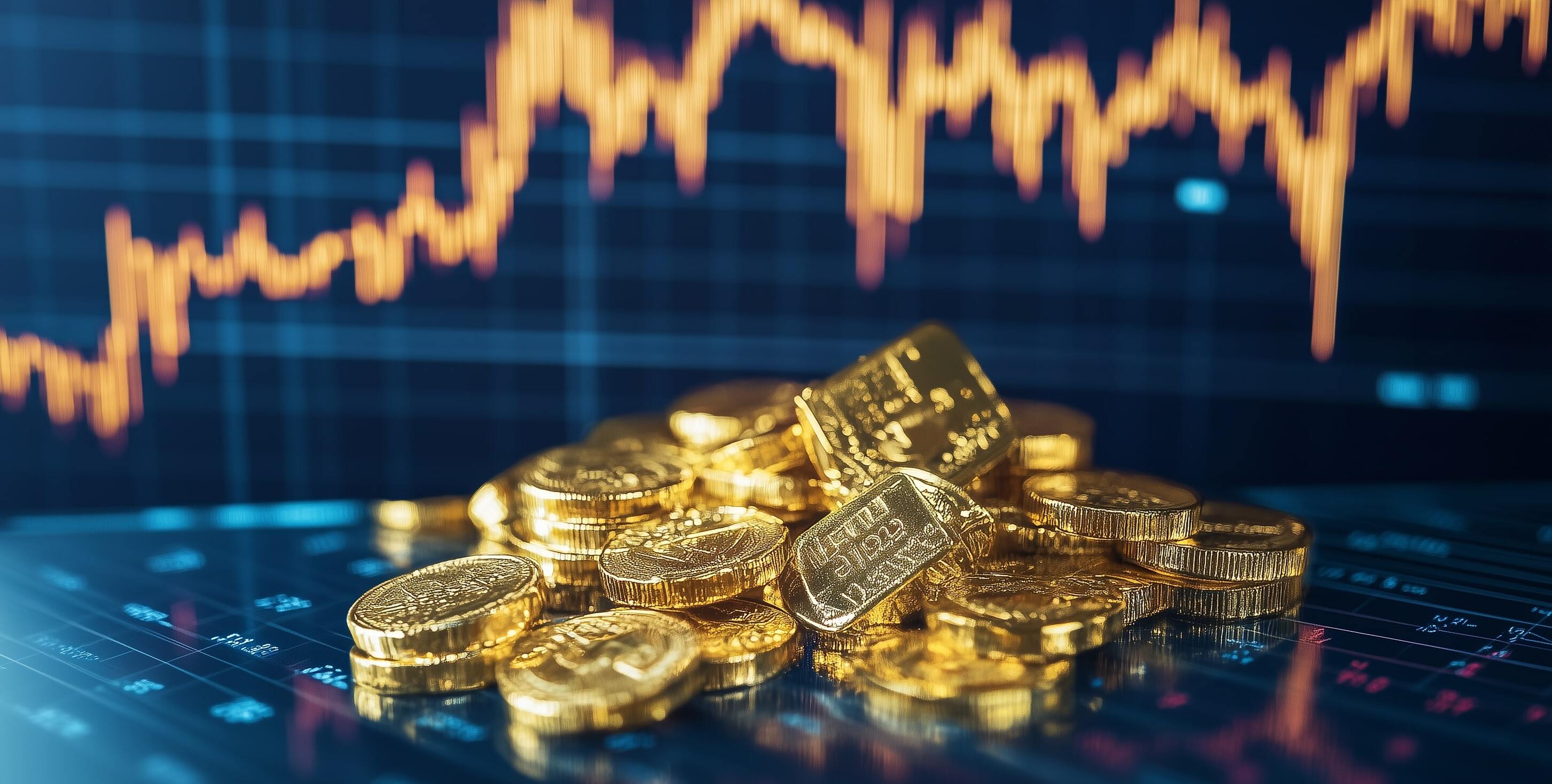Gold: Shining Through Uncertainty and Market Volatility
Gold as a Hedge Against Inflation (Symbol: XAU/USD)
Gold has long been regarded as a safe haven for investors, especially during times of inflation and market instability. As the purchasing power of fiat currencies like the U.S. dollar declines due to rising prices, gold tends to appreciate in value. Currently, gold is trading around $2,642 per troy ounce, up 27.88% from the beginning of the year. This remarkable growth underscores gold's ability to retain value, making it an attractive asset for those seeking to protect their portfolios against inflation.
Historical Performance of Gold vs. Other Assets
Gold’s performance in the long term offers a more conservative growth trajectory compared to stocks. From 1971 to 2024, gold posted an average annual return of 7.9%, while the stock market outpaced it with a 10.7% return. Yet, in periods of economic uncertainty, gold has consistently provided a reliable hedge. For example, during the recent inflation surge, gold reached an all-time high of $2,695 per ounce, outperforming the S&P 500, which gained 21% over the same period.
Understanding Spot Gold and Price Dynamics
The spot price of gold refers to its current price for immediate purchase and delivery. The current spot price of gold is hovering around $2,642 per ounce, with daily fluctuations reaching as high as $2,663 per ounce. Spot prices, like futures contracts, reflect market sentiment, but unlike futures, they are not based on expectations for future delivery. Factors such as geopolitical tensions, inflation concerns, and central bank policies significantly influence gold’s spot price.
Gold’s Relationship with Interest Rates and Real Yields
Interest rates play a crucial role in gold’s price movements. Historically, gold tends to rise when real interest rates fall. This is because lower interest rates make traditional investments like bonds less attractive, driving investors toward tangible assets like gold. However, in recent years, this correlation has been less reliable. While real yields on 10-year U.S. Treasuries are historically low at around 1.5%, gold has continued its upward trajectory, driven by other factors like central bank buying and market volatility.
Central Bank Demand for Gold
Central banks, particularly in China and Russia, have been significant buyers of gold in recent years. In 2023 and 2024, global central banks purchased over 1,000 metric tons of gold, contributing to the metal's price surge. Although China paused its purchases in mid-2024, the continued accumulation of gold by central banks has provided solid support for the metal. With gold accounting for just 5% of China’s foreign currency reserves, there is ample room for further accumulation, which could fuel additional price gains.
Geopolitical Tensions and Gold’s Safe Haven Status
Gold's role as a geopolitical hedge has been evident in recent months. The metal rose by 1% in response to Iran’s missile attack on Israel on Oct. 1, reinforcing its reputation as a “flight to safety” asset. Geopolitical instability, particularly with ongoing conflicts in Ukraine and the Middle East, continues to support demand for gold, pushing it higher. The correlation between geopolitical uncertainty and gold prices further enhances its appeal as a protective asset during global crises.
Technical Analysis: Gold’s Price Levels and Market Trends
Technically, gold’s price is supported by key levels around $2,600 and $2,530. The 50-day EMA (Exponential Moving Average) offers additional reinforcement for these support zones. Despite some resistance at the $2,675 level, many analysts expect that any pullbacks in the market will present buying opportunities. The general consensus is that gold remains in an upward trend, with projections that it could reach $3,000 per ounce over the long term.
Gold ETFs and Retail Investor Activity
In addition to central banks, retail investors are beginning to increase their exposure to gold through exchange-traded funds (ETFs). After a period of outflows in 2023, fund flows turned positive in mid-2024, signaling renewed interest from Western investors. Analysts from major institutions like Bank of America and Citigroup forecast gold reaching $3,000 in 2025, driven in part by increasing demand from both retail and institutional investors.
Conclusion: Is Gold a Buy?
Given the strong macroeconomic backdrop of falling interest rates, central bank buying, and geopolitical tensions, gold remains a compelling investment. The metal’s 28% year-to-date gain, its ability to hedge against inflation, and its safe-haven status make it a strong candidate for portfolio diversification. Although short-term pullbacks may occur, the long-term outlook for gold is bullish, with potential gains on the horizon. With a price target of $3,000 per ounce in 2025, gold could continue to outperform in an increasingly uncertain economic landscape.
That's TradingNEWS




















